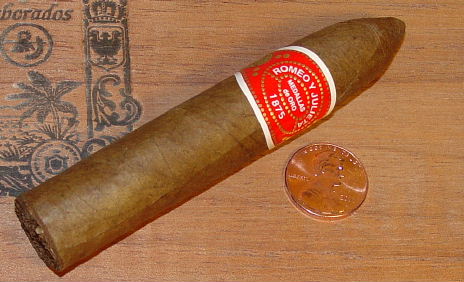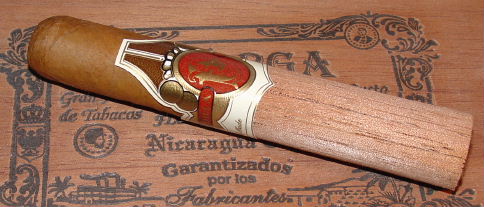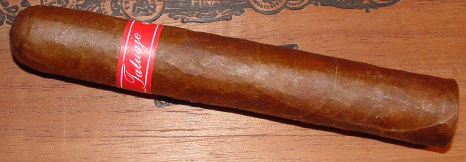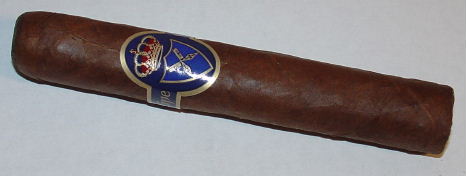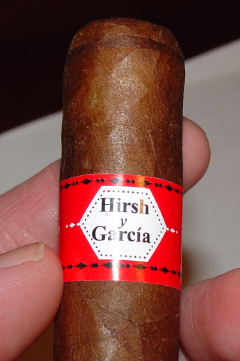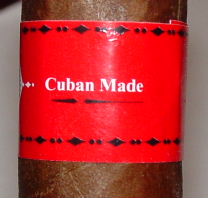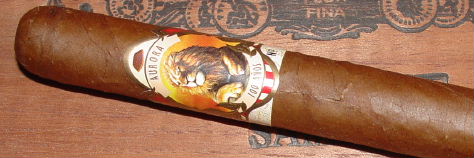Sancti Spiritus cigars are named for the province in Cuba in which the cigar’s maker, Jose “Don Pepin” Garcia, was born. The Sancti Spiritus region of Cuba cuts right through the center area of the island and is a cultural focal point. The scene depicted on the band is La Plaza Mayor in Trinidad, a major city and big tourist attraction in Sancti Spiritus. The statue in the foreground is of the Greek muse Terpsichore, the muse of dance, music, and lyric poetry. In the background is one of the many museums in the area which have been restored from their original function as the baronial mansions of sugar plantation owners.
Right off the bat I knew this was going to be a great cigar. It’s a Nicaraguan puro with a corojo wrapper that is just a little oily. It has a leathery texture to it and a pre-light scent of cedar. The model I tried, the 6 x 50 toro, was solidly rolled and felt very balanced in the hand.
I fired it up with my new Prince Blazer (nice torch, that) and got the show on the road. The first thing that struck me was the incredible amount of bean flavors — this cigar is absolutely chock full of cocoa and creamy coffee flavors. There are some base flavors of wood as well, but the cocoa is very prominent all the way to the end of this smoke. It’s a good medium in body, maybe a medium-plus by the end, but it’s not your typical Pepin powerhouse.
The flavors here are not as spicy as I’ve some to expect from Don Pepin, but this cigar was designed to be a little friendier than the heavier blends like the Habana Leon with its 70% ligero content. It’s lighter than the Havana Soul as well — in terms of body it’s probably on a par with the Tatuaje VI, but the flavors are totally different.
It’s well constructed, as to be expected, with a great draw and a burn that wavers at points but never needs correction. The ash is a very light gray and somewhat flaky. The aroma from the wrapper is sweet — a really nice bouquet of cedar.
All told, this is a helluva smoke for fans of relatively lighter bodied cigars — relative to Pepin’s other blends, that is. This is certainly no Macanudo, but it won’t blow you out of the water either. And the sweet cocoa and cedar flavors are about as good as they come. If this sounds at all close to the kind of flavor and body profile you like, don’t hesitate to try this cigar. Sancti Spiritus cigars sell for around 5 to 6 USD and yes, I do think they’re worth it.
So far I think these are only available from Cigarking.


